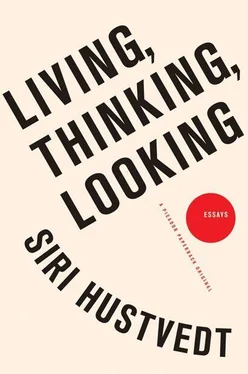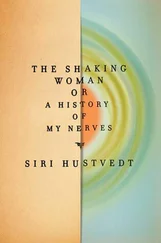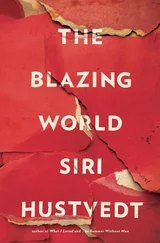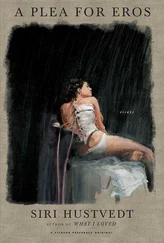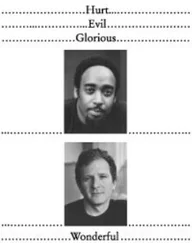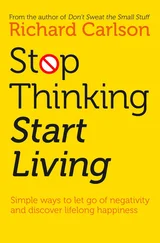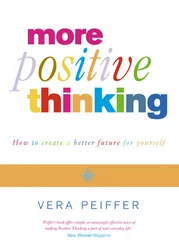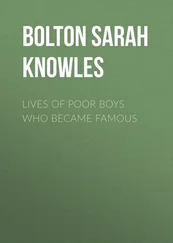13. Paul Virilio, The Aesthetics of Disappearance , trans. Philip Beitschman (New York: Semiotext(e), 1991).
14. Quoted in Ralph Harrington, “The Railway Accident: Trains, Trauma and Technological Crisis in Nineteenth-Century England,” http/www.york.ac.uk/insti/irs/irshome/papers/rlyacc.htm.
Kiki Smith: Bound and Unbound
1. Mary Douglas, Purity and Danger: An Analysis of the Concepts of Pollution and Taboo (London: Routledge and Kegan Paul, 1966), 150.
2. Deborah Solomon, “How to Succeed in Art,” New York Times Sunday Magazine, June 27, 1999, 38–41.
Truth and Rightness: Gerhard Richter
1. Maurice Merleau-Ponty, “Eye and Mind,” trans. Carleton Dallery, in The Primacy of Perception, ed. John Wild (Chicago: Northwestern University Press, 1964), 162.
2. Dietmar Elger, “Landscape as Model,” Gerhard Richter: Landscapes, ed. Elger (Ostfldern-Ruit: Hatje Cantz, 2011), 16.
3. Claire Petitmengin, “Toward the Source of Thoughts: The Gestural and Transmodal Dimension of Lived Experience,” Journal of Consciousness Studies 14, no. 3 (2007): 58.
4. Ibid., 58.
5. Robert Storr, “Interview with Gerhard Richter,” in Gerhard Richter: Forty Years of Painting (New York: Museum of Modern Art, 2002), 289.
Why Goya?
1. The Mirror of Art: Critical Studies by Baudelaire, trans. Jonathan Mayne (Garden City, NY: Doubleday Anchor Books, 1956), 183.
2. Ibid., 184.
3. Quoted in Philip Hofer, introduction to Francisco Goya y Lucientes, The Disasters of War (New York: Dover, 1967), 1.
4. David Sylvester, “Goya,” in About Modern Art: Critical Essays 1948–1997 (New York: Henry Holt, 1997), 253–58.
5. Fred Licht, Goya (New York, London: Abbeville Press, 2001), 174–93.
6. Robert Hughes, Goya (New York: Alfred A. Knopf, 2003), 307.
7. Michael Nyman, Facing Goya, libretto by Victoria Hardie, Warner Classics, CD 0927-45342-2, 2002.
8. Goya is referred to in connection with McCullin in almost every article written about him, and he himself has mentioned Goya in interviews: “When I took pictures in war I couldn’t help thinking of Goya.” See “The Images and Memories of War,” Open Country, BBC Radio 4, April 1, 2005, http://dartcenter.org/content/images-and-memories-war.
9. John Berger, “The Honesty of Goya,” Selected Essays , ed. Geoff Dyer (New York: Pantheon, 2001), 57.
10. Gregory Paschalidis, “Images of War and the War of Images,” Aristotle University of Thessaloniki, 2006, http://genesis.ee.auth.gr/dimakis/Gramma/7/06-paschalidis.htm.
11. Susan Sontag, On Photography (New York: Farrar, Straus and Giroux, 1973), 19.
12. See Jean Baudrillard, Simulacra and Simulation (Ann Arbor: University of Michigan Press, 1995).
13. See The Paul Virilio Reader , ed. Steve Redhead (New York: Columbia University Press, 2004).
14. Susan Sontag, Regarding the Pain of Others (New York: Farrar, Straus and Giroux, 2003), 45.
15. Hughes, Goya, 314.
16. See Antonio Damasio’s discussion of his patient Eliot, whose frontal lobe damage creates an emotional detachment and lack of empathy that is debilitating. Damasio, Descartes’ Error: Emotion, Reason and the Human Brain ( New York: Quill: HarperCollins, 2000), 34–79.
17. Nelson Goodman, Languages of Art: An Approach to a Theory of Symbols (Indianapolis and Cambridge: Hackett, 1976), 248.
18. D. O. Hebb, The Organization of Behavior (New York: Wiley, 1949).
19. Margaret M. Bradley, Maurizio Codispoti, Bruce N. Cuthbert, and Peter J. Lang, “Emotion and Motivation I: Defensive and Appetitive Reactions in Picture Processing,” Emotion 1, no. 3 (2001): 276–98.
20. Giacomo Rizzolatti and Michael A. Arbib, “Language Within Our Grasp,” Trends in Neuroscience 21, no. 5: 188–94.
21. Battaglia and Freedberg presented their findings at a small seminar “Art and the Brain” at Columbia University on June 13, 2006. I was present that day and have summarized their findings as I remember them, but have no further information about publication of the paper.
22. Matthew Botvinick, Amishi P. Jha, Lauren M. Bylsma, Sara A. Fabian, Patricia E. Solomon, and Kenneth M. Prkachin, “Viewing Facial Expressions of Pain Engages Cortical Areas Involved in Direct Expression of Pain,” NeuroImage 25 (2005): 312–19.
23. It is obvious that I am among those who accept that Goya is the artist of the Black Paintings. For a discussion of the controversy, see my essay, “More Goya: There Are No Rules in Painting,” in Mysteries of the Rectangle: Essays on Painting (New York: Princeton Architectural Press, 2005), 113–18.
24. Siri Hustvedt, What I Loved (New York: Henry Holt, 2003), 202.
25. There is a single precedent I know of for altering a work of art. Robert Rauschenberg asked Willem de Kooning for a drawing to erase, which he got. See Mark Stevens and Annalyn Swan, De Kooning: An American Master (New York: Knopf, 2004), 358–60.
26. Maia Damianovic, “Dinos and Jake Chapman,” Journal of Contemporary Art , 1997, http://www.jca-online.com/chapman.html. It is notable that here the brothers are quoted as if they were a single being with one voice.
27. Siri Hustvedt, “Narratives in the Body: Goya’s Los Caprichos ,” in Mysteries of the Rectangle, 62–91.
28. More interesting than the rather obvious references to medical technologies in this work is the idea of fusion, which refers back to the brothers themselves as sibling collaborators.
29. Quoted in Jonathan Jones, “Look What We Did,” The Guardian, March 31, 2003.
30. Baudelaire, The Mirror of Art, 186.
31. Hustvedt, What I Loved , 167.
32. Joseph E. LeDoux, “Emotion as Memory: Anatomical Systems Underlying Indelible Neural Traces,” in Handbook of Emotion and Memory , ed. S. A. Christensen (Hillsdale, NJ: Lawrence Erlbaum, 1992), 280–81.
33. J. H. Krystal, S. M. Southwick, and D. S. Charney, “Post-Traumatic Stress Disorder: Psychobiological Mechanisms of Traumatic Remembrance,” Memory Distortion: How Minds, Brains, and Societies Reconstruct the Past (Cambridge, MA: Harvard University Press, 1995), 150–72.
34. See Hustvedt on trauma: “More Goya,” 105–7.
35. Quoted in Daniel Brown, Alan W. Scheflin, and D. Corydon Hammond, Memory, Trauma Treatment, and the Law (New York: W. W. Norton, 1998), 95–96.
36. Neurologist V. S. Ramachandran has argued that “the need to isolate a single visual modality before you amplify the signal in that modality” is an organizing principle of art in general, which, he says, explains “why an outline drawing or sketch is more effective as ‘art’ than a full colour photograph.” Ramachandran and William Hirstein, “The Science of Art: A Neurological Theory of Aesthetic Experience,” Journal of Consciousness Studies 6, no. 6–7 (1999): 24. This argument, however, seems too pat. Less isn’t always more, and the camera, like the paintbrush, is a tool for making art. Such a principle cannot explain the fascination of a Jackson Pollock or the great triptychs of Hieronymus Bosch, for example, works that overwhelm the viewer with visual detail.
37. Lawrence Ferlinghetti, “In Goya’s Greatest Scenes We Seem to See,” A Coney Island of the Mind (New York: New Directions, 1958), 9–10.
38. Ivo Andric, Conversation with Goya: Bridges, Signs, trans. Celia Hawkesworth and Andrew Harvey (London: The Menard Press, 1992), 10–11.
Читать дальше
